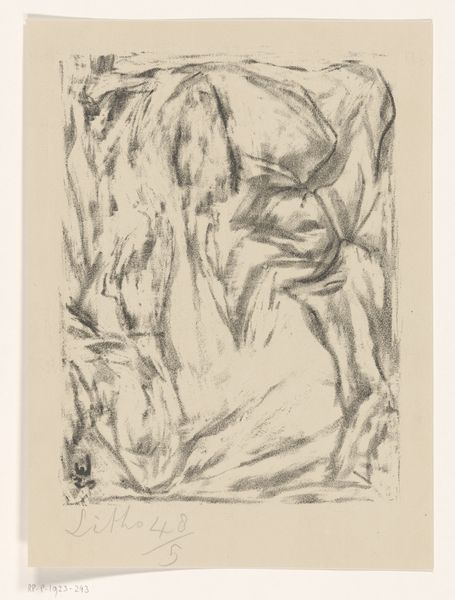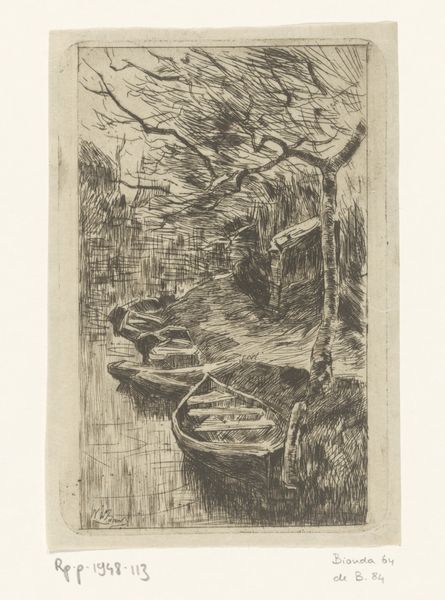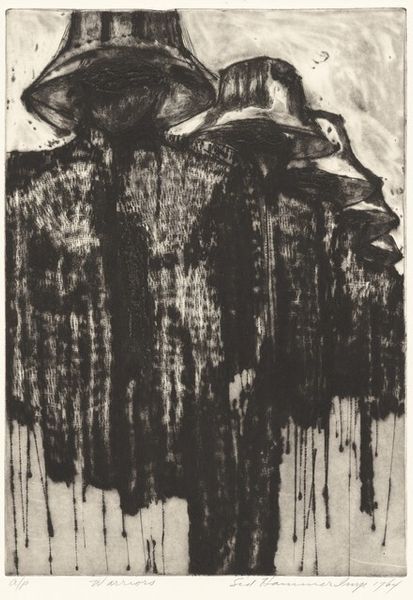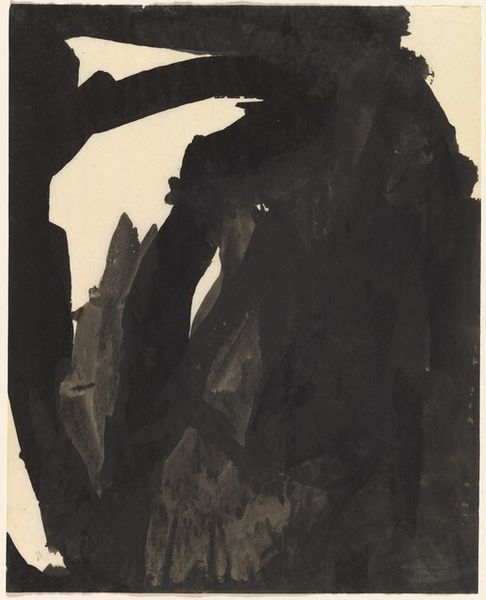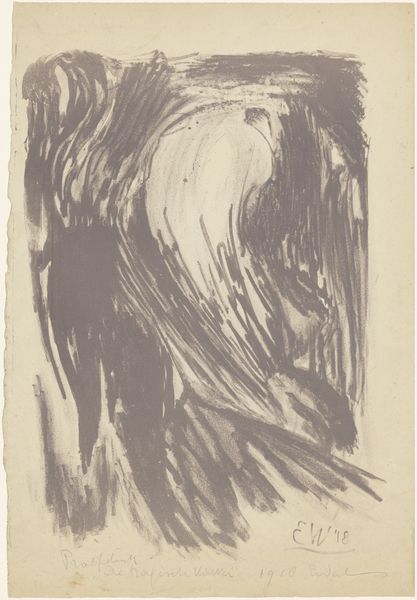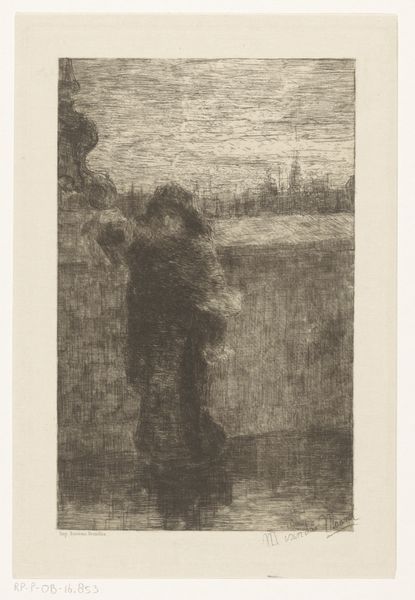
drawing, graphic-art, print, etching
#
drawing
#
graphic-art
# print
#
etching
#
landscape
#
symbolism
Dimensions: height 265 mm, width 163 mm
Copyright: Rijks Museum: Open Domain
Editor: So, here we have Etha Fles' etching, "Chimère van de Notre-Dame," created sometime between 1867 and 1910. The figure looks so somber, and the skyline behind it seems blurred as though reflecting that mood. How would you interpret this work? Curator: Consider the graphic qualities—the contrasting textures. We have the coarse, dark hatching defining the chimera itself, juxtaposed against the delicate, almost ethereal lines evoking the cityscape and sky. What meaning arises from this distinction in technique? Editor: Perhaps it is meant to emphasize the real versus the imagined or otherworldly? Curator: Possibly. But consider also the composition. The chimera, a being of mythology, dominates the visual field, yet it is fixed, immobile. Its gaze is directed outward, towards a city teeming with implied activity, yet rendered almost indistinctly. How does this layering of contrasting forms affect our reading of the artwork? Editor: I see what you mean. It makes you think about how the fantastic and the mundane relate to each other… or maybe, how the viewer relates to both? Curator: Precisely! The work becomes a meditation on the observer's position. Do you see the diagonal thrust created by the body of the beast? How that affects the feeling of compression and tension within the rectangular field of the work? Editor: I do now! The formal arrangement reflects the psychological tension between the tangible and intangible. It all leads to something, maybe, slightly ominous. I hadn’t picked up on that until now. Curator: Good eye. Paying attention to these structural relationships grants you a clearer path toward possible symbolic associations, without depending on what Fles *said* it all meant. We allow her method to speak for itself, to us. Editor: Thanks! Looking at the techniques and composition helps to access the underlying themes in ways that simply looking never revealed before.
Comments
No comments
Be the first to comment and join the conversation on the ultimate creative platform.

